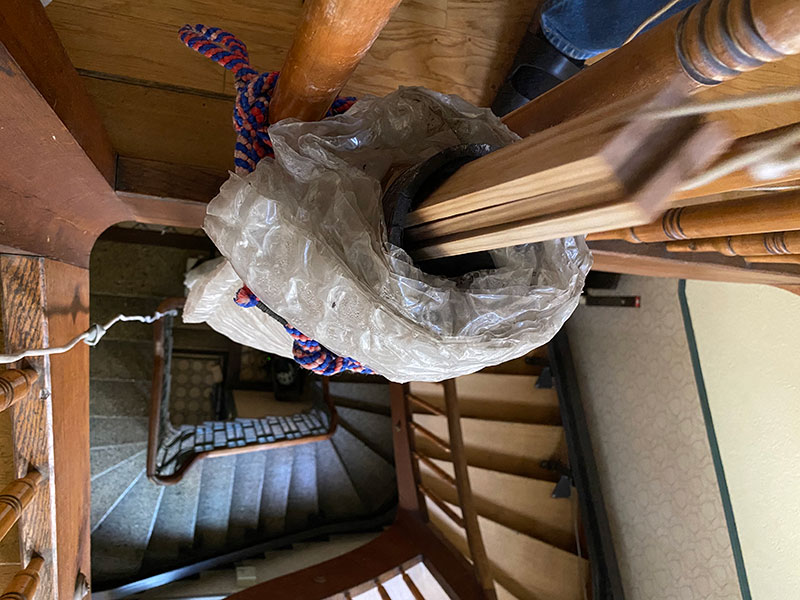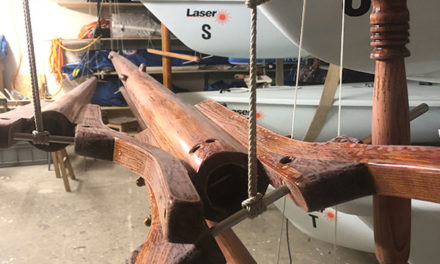Well, there is the traditional approach followed by Henry. You take a tree of suitable size or a beam (spruce or larch are fine) and plane it to shape according to Skene’s scantling rules. The gaff fork is made from choice pieces of oak with the grain following the shape around the mast. Unfortunately, this method results in quite heavy spars which you or your mate will have to hoist every time you go sailing. The heavy weight aloft is not necessarily an advantage neither.
It just worked out that due to some communication delays between Denmark and Switzerland Walter had started out on his own gaff project. His gaffs are hollow and the forks are made from laminated steam bent ash battens. The resulting spars are considerably lighter and quite possibly suitably strong at least for coastal sailing (see building-hollow-spars-and-clubs). Anyways, EMMA now has a double set of gaffs which is certainly no disadvantage when cruising off the beaten tracks.

Piping hot ash battens coming out of the vertical steamer mounted in the stairways

The battens need some convincing to conform to the intended shape

Before gluing and riveting the wood is left to cool overnight

The finished product is quite delicate but surprisingly strong

The forks get leathered in the area where they ride on the mast
The shoe is made from spruce – it does not need to bee harder than the wood of the mast which is larch. A worn gaff shoe is certainly easier to replace than a worn mast.

The shoe is clad in leather to protect the mast





